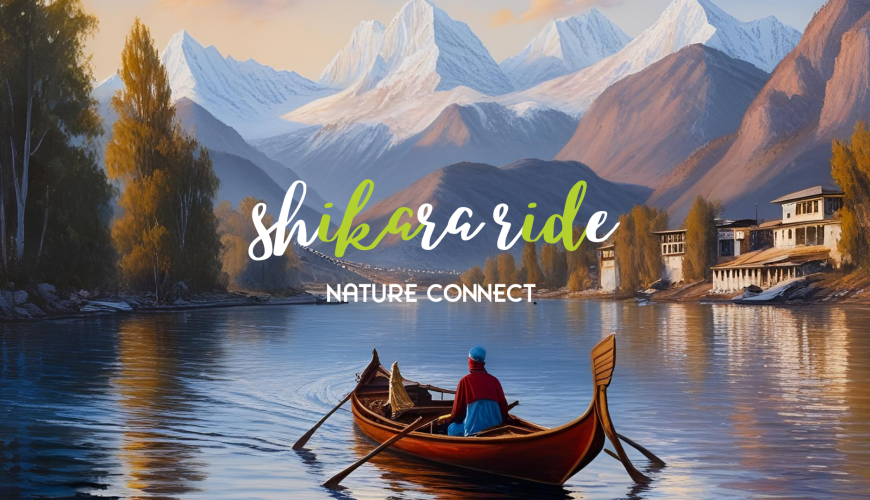Top Mughal Gardens Kashmir You Must Visit on Your Trip
Mughal Gardens Kashmir: A Royal Stroll Through Nature’s Glory When you think of Kashmir, you picture snow-capped mountains, serene lakes, and most of all – the enchanting Mughal Gardens Kashmir. These gardens are not just floral retreats; they are living poetry crafted by the Mughals to blend architecture and nature in harmony. Whether it’s spring, […]
Kashmir Great Lakes Trek with Nature Connect
Kashmir Great Lakes Trek with Nature Connect: Your Ultimate Himalayan Adventure The Kashmir Great Lakes Trek is one of the most breathtaking and adventurous treks in India. Known for its stunning alpine lakes, lush meadows, and snow-clad mountains, this trek is a dream come true for trekkers. Whether you’re an experienced hiker or a beginner, […]
Shikara ride booking
Shikara Ride Booking: How to Experience Dal Lake Like Never Before A shikara ride in Dal Lake is one of the most enchanting experiences you can have in Srinagar, Kashmir. Whether you’re a solo traveler, a couple on a romantic getaway, or a family looking to relax, a shikara boat ride offers breathtaking views, tranquility, […]
Asia’s Largest Tulip Garden
Asia’s Largest Tulip Garden Welcome to the mesmerizing Tulip Garden Kashmir, also known as the Indira Gandhi Memorial Tulip Garden—a magical paradise nestled in the heart of Srinagar, near the iconic Dal Lake. As Asia’s Largest Tulip Garden, this sprawling marvel spans over 30 hectares and showcases more than 1.5 million tulips of various vibrant […]
Gulmarg Gondola Booking Online
Gulmarg Gondola Online Booking The Gulmarg Gondola is not just a cable car ride; it’s an unparalleled journey that takes you to the heart of Kashmir’s breathtaking landscapes. As the highest cable car in Asia, the Gulmarg Gondola offers a thrilling and scenic experience that draws tourists from all over the world. Here’s everything you […]
Ski Courses in Kashmir
Kashmir, often referred to as the “Paradise on Earth,” transforms into a winter wonderland as snow blankets its picturesque valleys. Among the many thrilling activities Kashmir offers, skiing stands out as a must-try experience. Whether you’re a beginner eager to take your first glide or a seasoned skier looking to refine your skills, Kashmir’s ski […]
Kashmir Heritage Tour
Kashmir, the “Paradise on Earth,” is not just a destination for nature lovers but also a treasure trove of culture, history, and heritage. With Nature Connect Kashmir Travels, embark on a Kashmir Heritage Tour to uncover the region’s rich past, unique traditions, and awe-inspiring architecture. Key Heritage Highlights in Kashmir Shankaracharya Temple Perched atop the […]
ATV Rides In Kashmir
Kashmir, often referred to as “Paradise on Earth,” is not only about serene landscapes and tranquil lakes; it also offers a thrilling side for adventure seekers. One such exhilarating experience is riding an All-Terrain Vehicle (ATV) through the rugged trails and stunning landscapes of Kashmir. Why Choose ATV Rides in Kashmir? Kashmir’s diverse terrain is […]
Hot Air Ballooning in Kashmir
Kashmir, with its mesmerizing landscapes of snow-capped mountains, lush meadows, and serene valleys, has always been a haven for adventure enthusiasts. While trekking, skiing, and horse riding are popular activities, a unique and thrilling way to experience the beauty of Kashmir is through hot air ballooning. Imagine floating high above the stunning scenery, with panoramic […]
Horse Riding In Kashmir
Kashmir, with its enchanting landscapes and majestic mountains, is a dream destination for travelers. Among the many adventures that the region offers, horse riding stands out as a unique way to explore its beauty. Imagine trotting along serene trails, surrounded by lush meadows, glistening rivers, and snow-capped peaks. At Nature Connect Kashmir Travels, we ensure […]










